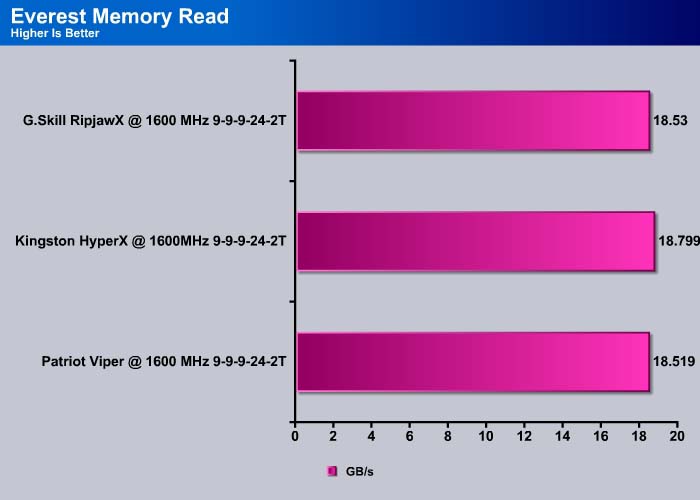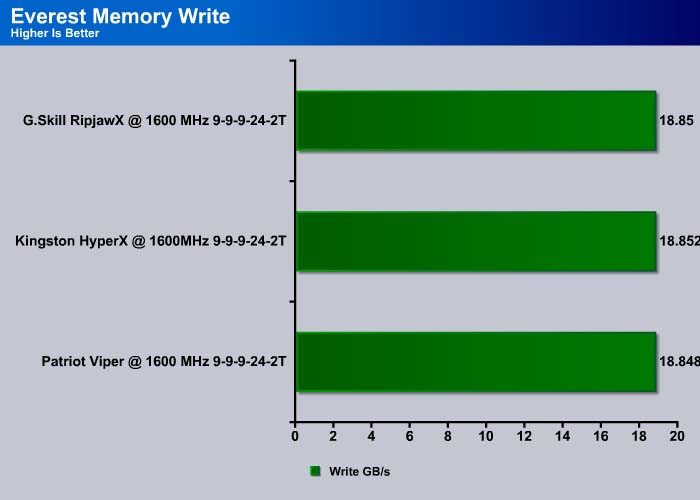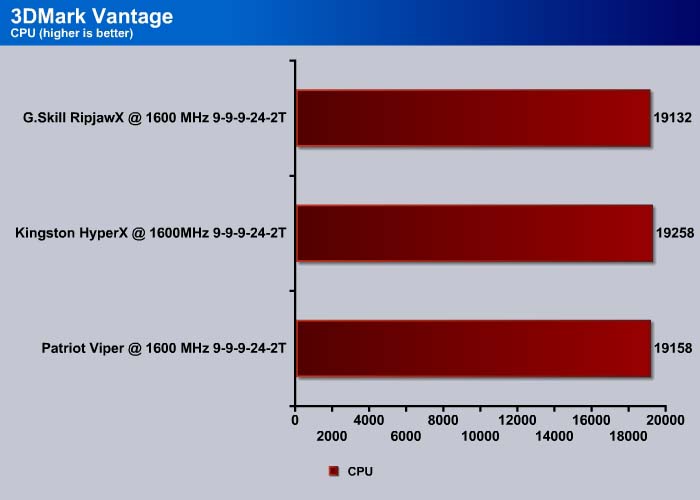This G.Skill RipjawsX kit brings 8GB of memory at the relatively cheap price of $99.99. It runs at 1600MHz, and is a great choice for budget users who still want great performance.
INTRODUCTION
Older DDR3 memory often requires higher voltages than the default 1.5V specified by JEDEC, the governing body of computer memory standards. Memory sticks often contain a voltage specified on the sticker, indicating the voltage necessary for the memory to work at the specified frequency.. For example, a Kingston HyperX kit that was purchased 2-3 years ago is designed to work with the Intel Nehalem architecture at 1600MHz, and requires 1.65v.
Enthusiast systems often do not have problems running these memories because the enthusiast boards have plenty of adjustments, from memory timings to voltage adjustments, all of which help users fine-tune their systems. However, budget boards and pre-built systems like Dell and HP often have a limited number of adjustments. Thus, users try to install memory modules that require higher voltages, the motherboard may not support it at the specified clockspeed and timing.
With the improvements of the manufacturing technology on the DDR3, memory manufacturers are able to make DDR3 memory that will run 1600MHz at 1.5V without needing to raise the voltage. For those with limited BIOS adjustments, this is great news. Budget users will be able to put these memory modules into Dell or HP systems, or onto budget boards, and expect the system to run at 1600 MHz without any problem.
Today, we’re looking at the F3-12800CL9D-8GBXL from G.Skill, a 2x4GB DDR3-1600 (PC3-12800) memory kit intended for budget users.
Pictures & Impressions
The usual plastic clamshell package that we have seen on memory modules.
Nothing special on the back of the package.
G.Skill has been in the memory business since 1989 and has always been regarded as one of the best memory manufacturers. The F3-12800CL9D-8GBXL is the latest product from G.Skill that carries the RipjawsX brand. The RipjawsX line of memory was launched earlier this year, and is designed specifically for Intel Sandy Bridge LGA 1155 processors and the Intel 6 series motherboards. The new RipjawsX series consists of memory speed ranges from DDR3 1333MHz all the way up to 2300MHz, with various timings. Our review sample (F3-12800CL9D-8GBXL) is rated to operate at 1600MHz with timings of 9-9-9-24-2N at a default 1.5V. Since Intel has specified that the memory voltages should not exceed 1.65V, this memory should be well within the bounds.
Memory modules are a bit boring to look at, and the only visual difference between one memory kit and the next is the color and design of the heatspreader. The RipjawsX brand kits use a red heatspreader that looks quite nice. G.Skill also has other colors like blue or black to choose from. The top of the heatspreader reminded us of Wolverine’s claws.
The heatspreader extends about 1 cm above the memory stick. The height on the RipjawX is just right, and it provides for more heat disspiation without being obtrusive. It is not as tall as some other heatspreaders we have tested, so we do not think that it should get in the way of the large CPU heatsinks like the Noctua NH-D14. The extra bit of cooling is nice, but it is probably not necessary since the RAM only operates at 1.5V; a regular size heatspreader should suffice to keep the RAM cool.
The RipjawsX is backed by a limited lifetime warranty from G.Skill. It features Intel XMP profiles so not much tinkering is needed–if the motherboard supports XMP, it will read the timings and frequency automatically.
Overclocking
Both Intel and AMD integrated the memory controller onto the processor, so the reality is that memory timings and speed have become less important even for hardcore overclockers. Extreme overclockers will most likely opt for the K series processors, with which overclocking is as simple as raising the multiplier rather than the system front side bus. Thus, having a memory with lots of overclocking headroom is less important than it used to be. Rather, a memory with low latencies maybe a bit more useful in gaining the extra bit of performance.
Unfortunately, we could not get much overclocking out of the RipjawsX. We set the voltage to 1.65 V in the BIOS and tried to see if we could boot the system up at 1866 MHz with timings set in auto. Sadly, the system failed to boot. We then tried to see if we could tighten up the timing slightly. While we can boot our system with the memory timings set to 8-8-8-24-1T, it will crash during 3DMark Vantage test. The system does pass the Everest and Sandra benchmarks but crashes during 3DMark Vantage. There is not much headroom we can tinker with on the RipjawsX.
For those that want memory modules with smaller timings, G.Skill does have other DDR3-1600 kit under the same RipjawsX brand. Buyers should keep an eye out for low-latency memories.
Testing & Methodology
| Test Rig | |
| Case Type | None |
| CPU | Intel Core i5-2500K |
| Motherboard | ASUS P8P67 Deluxe LGA1155 |
| Ram | Kingston HyperX 1600
Patriot Viper 1600 G.Skill RipjawsX F3-12800CL9D-8GBXL |
| CPU Cooler | Zalman CNPS9900 Max |
| Hard Drives | Seagate 7200.11 1.5TB |
| Optical | None |
| GPU | ASUS HD 6870 |
| Case Fans | 120mm Fan cooling the MOSFCPU area |
| Docking Stations | None |
| Testing PSU | Cooler Master UCP 900W |
| Legacy | None |
| Mouse | Microsoft Intellimouse |
| Keyboard | Logitech Keyboard |
| Gaming Ear Buds | None |
| Speakers | None |
Test Suite
| Benchmarks |
| Sandra 2011b |
| AIDA64 1.50 |
| PCMark Vantage X64 |
| 3DMark Vantage |
RESULTS
Sandra 2011
The G.Skill RipjawsX ties with the Kingston HyperX, and both memory modules are a tad faster than the Patriot Viper.
The RipjawsX kit is a bit slower than the HyperX and the Viper.
AIDA64
AIDA64 shows the HyperX to have the fastest read speed, followed by the RipjawX and then the Viper.
The RipjawsX kit has essentially the same memory write speed as the other two kits.
Once again, the HyperX and the Patriot Viper have a better latency than the RipjawX, though the difference is minimal.
While we can see that there are minor differences between the three memory modules, these differences are often less than 1%, and we seriously doubt that there is any observable disparity in performance.
3DMark Vantage
We can see that the higher memory bandwidth and the lower latency from the Kingston HyperX shows its benefit in the CPU test.
PCMark Vantage
The Kingston HyperX once again tops the charts in PCMark’s Memory test suite, followed by the Patriot Viper. The G.Skill RipjawsX kit takes last place.
We see that the Kingston HyperX has a lower score here, which is most likely due to the fact that it is 2x2GB rather than the 2x4GB RipjawsX and Viper kits.
The results are pretty much self-explanatory. All three memory modules perform within a couple of percentages of each other. Generally, the Kingston HyperX takes the lead, while the RipjawX and Patriot Viper kits swap for second and third place. This once again confirms the fact that with the Sandy Bridge processor line, memory performance is less crucial than it used to be.
CONCLUSION
Intel’s Sandy Bridge makes high-speed memory less important than it used to be. In the past, enthusiasts often sought the highest clocked memory speeds they could, with tight timing in order to gain the best performance. Not only did these memory modules help with performance, they also provided headroom for squeezing as many MHz out of the memory during overclocking. Sandy Bridge limits extreme overclocking to K-series CPUs. Even in the K series, it is done by raising the multiplier rather than by tampering with the front side bus. Thus, the need to have the fastest memory is less important.
The G.Skill RipjawsX F3-12800CL9D-8GBXL kit brings 8GB of memory at the relatively cheap price of $99.99. What is nice about the kit is that it is able to run natively at 1600MHz at a default 1.5V. Thus, it will have less compatibility issues, especially for boards that lack extensive voltage controls. Unfortunately we cannot tighten the timing on the memory beyond the specified setting. While we can boot the system at timing 8-8-8-24-1T, and pass the Everest and Sandra benchmarks, the system would always crash during the 3DMark benchmark. Furthermore, we were not able to overclock the memory beyond the specified 1600MHz even when we raised the voltage to 1.65V. Users can only expect the memory to run at the specified setting without much room for tinkering.
Overall, the G.Skill Ripjawx does its job. It is one of those pieces of hardware that can be installed and used without any extensive customization or setting changes. However, there are no special features to dazzle hardcore enthusiasts.
| OUR VERDICT: G.Skill RipjawsX F3-12800CL9D-8GBXL Memory Kit | ||||||||||||||||||
|
||||||||||||||||||
| Summary: Overall, the G.Skill Ripjawx does its job. It is one of those pieces of hardware that can be installed and used without any extensive customization or setting changes. However, there are no special features to dazzle hardcore enthusiasts. |
 Bjorn3D.com Bjorn3d.com – Satisfying Your Daily Tech Cravings Since 1996
Bjorn3D.com Bjorn3d.com – Satisfying Your Daily Tech Cravings Since 1996

























